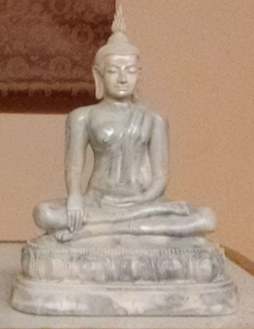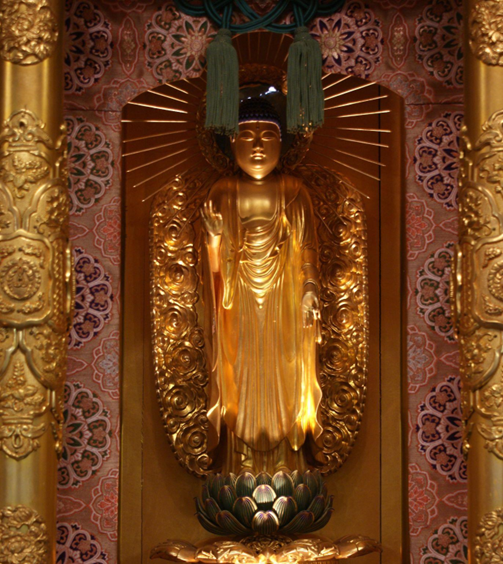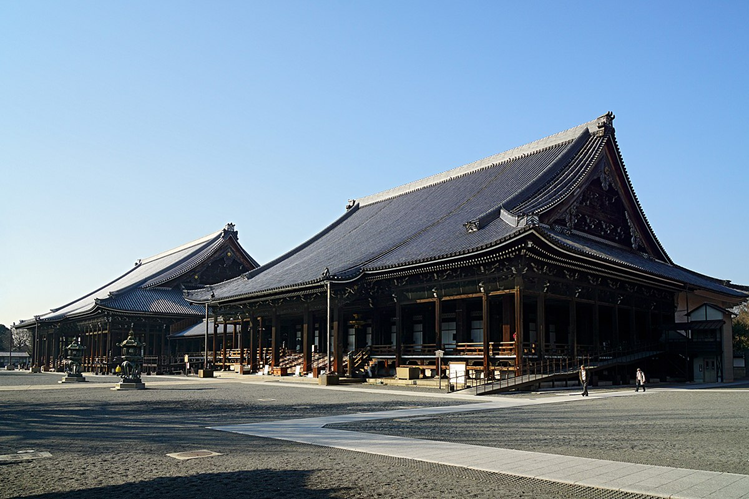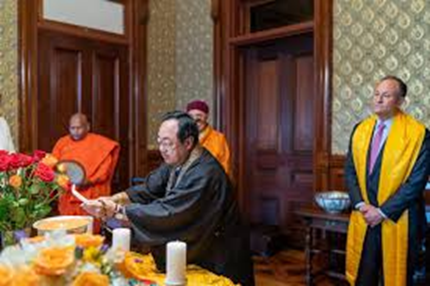Overview of Buddhism and the Jodo Shinshu Tradition
Overview of Buddhism and the Jodo Shinshu Tradition
What is Buddhism?
At its core Buddhism is a set of teachings and practices that helps us to live a happy and meaningful life that flows in harmony with reality. The various Buddhist traditions found throughout the world can all be traced back to a historic person, Shakyamuni Buddha (also known as Siddhartha Gautama or sometimes just “The Buddha”), who was born in Nepal and lived in India over 2500 years ago.

Image: Shakyamuni Buddha in “Enlightenment Pose” (statue at Idaho-Oregon Buddhist Temple)
Buddhist teachings tend to share an understanding that our human lives can be both painful and beautiful. Beyond this understanding, they provide a variety of practical and spiritual tools to help us to live a life of wisdom and compassion.
What kind of Buddhism is practiced at Idaho Oregon-Buddhist Temple?
We practice a Pure Land form of Buddhism known as Jodo Shinshu which honors Amida Buddha, the Buddha of infinite wisdom and compassion, in addition to Shakyamuni Buddha.

Image: A statue of Amida Buddha from the Idaho-Oregon Buddhist Temple’s altar
Our tradition’s founder is Shinran Shonin who lived in Japan about 750 years ago. Jodo Shinshu is the most common form of Buddhism in Japan. Japanese immigrants who arrived in North America in the late 1800’s and early 1900s; brought Jodo Shinshu with them and established temples to serve their communities. Now Jodo Shinshu temples in North America are ethnically diverse and offer most of their programs in English.

Image: Home temple for Nishi Hongwanji Buddhist Tradition (Jodo-Shinshu Honganji-ha) in Kyoto, Japan
What do Buddhists believe?
At Idaho-Oregon Buddhist temple, we emphasize a realistic and practical approach to Buddhism that is well suited to people who are living busy lives, raising families, working, and participating in their communities.
Four of the key Buddhist principles that we keep in mind as we live our lives can be easily summarized by the acronym “Life is BIIG”
Life is a Bumpy road, Life is Impermanent, Life is Interdependent, Life is fundamentally Good.
- Life is a Bumpy road. It is commonly said that Buddhism teaches that life is suffering (dukkha), but it may be more accurate to say that life is a bumpy road. Life doesn’t always go as smoothly as we hope it would. It is realistic to accept that fact, endure the bumps, and then move on.
- Life is Impermanent. Everything changes. Nothing stays the same. Mountains are worn down by water and weather. And human beings are changing every moment--children grow up, adults grow old. Life is filled with opportunities and disappointments. We learn to embrace the moment and then let it go for the next opportunity.
- Life is Interdependent. Everything in life is interconnected. Like ripples in water, our actions move outward affecting a wider and wider range of events. In turn, we are affected by the actions of other beings and events.
- Life is fundamentally Good. With the proper attitude or right view, we can find joy in our lives--both the bumps in the road and the smooth straight-aways.
(Note: this easy way to describe/summarize the Buddhist teaching is borrowed from the book OCEAN by Dr. Kenneth Tanaka)
Jodo Shinshu or Shin Buddhism welcomes all to participate in the practice of gratitude and awareness of our interconnectedness.
How many different kinds of Buddhism are there?
Lots! Because Buddhism has been around for over 2000 years, and because its teachings have spread throughout the world, there are more forms of Buddhism than anyone can count. These forms of Buddhism have developed to suit the spiritual needs of people from different backgrounds and cultures. Because each person’s spiritual path is unique, we may each find ourselves drawn to different aspects of the teaching, different practices, and styles of study and engagement. It is common for Americans interested in Buddhism to read about different kinds of Buddhism, try different practices, and attend different Buddhist communities in order to find a Buddhist path that feels comfortable to them. At IOBT we welcome visitors and spiritual seekers and are happy to be part of your life’s journey, whether for a morning, a year, or a lifetime.

Image: Buddhist leaders from different Buddhist lineages gather at the White House to Celebrate Vesak 2021
Where can I find out more about Jodo Shinshu Buddhism?

We encourage you to visit the website of our parent organization, the Buddhist Churches of America (BCA) which serves the mainland USA https://www.buddhistchurchesofamerica.org/
